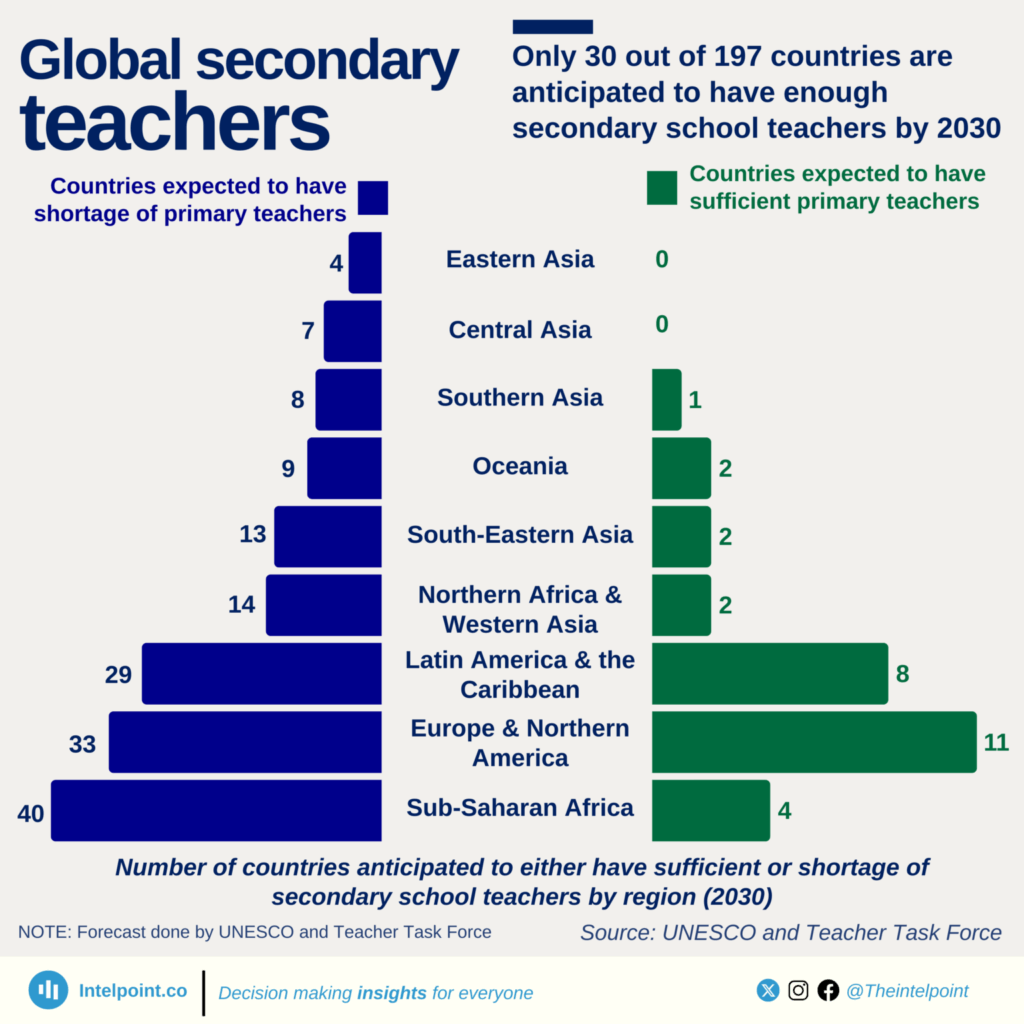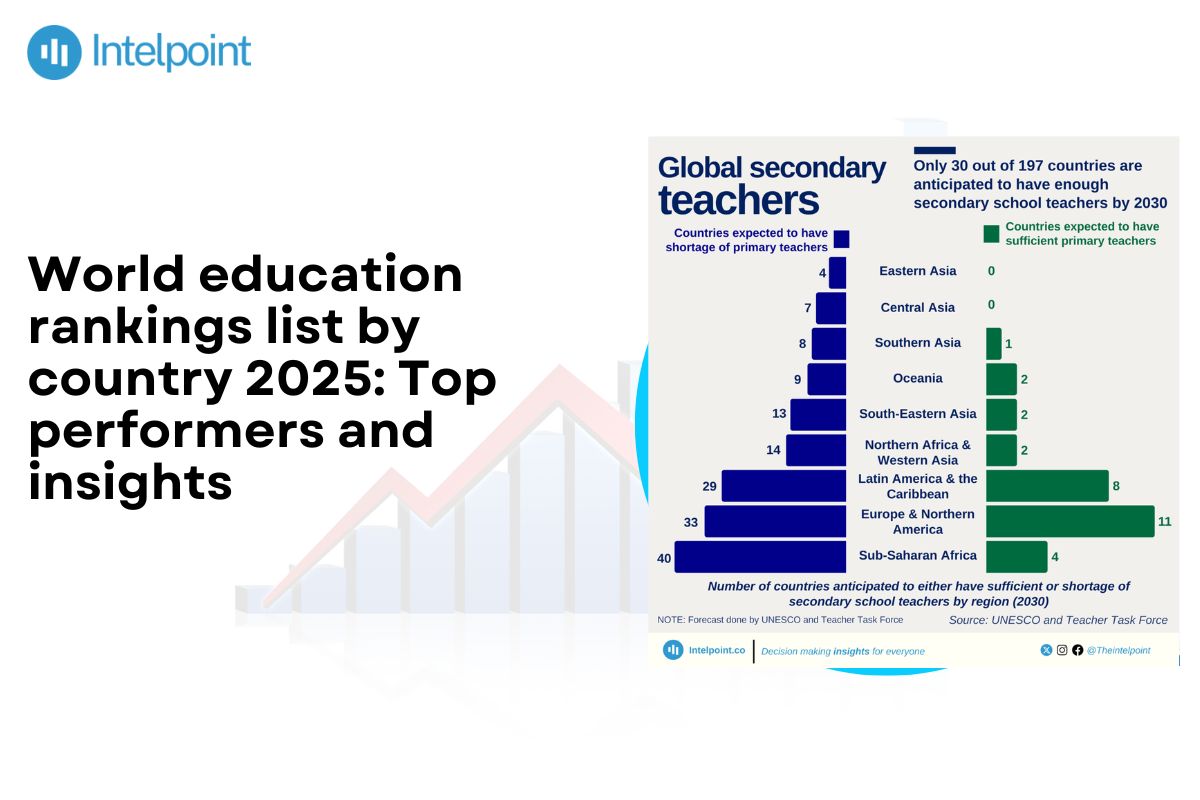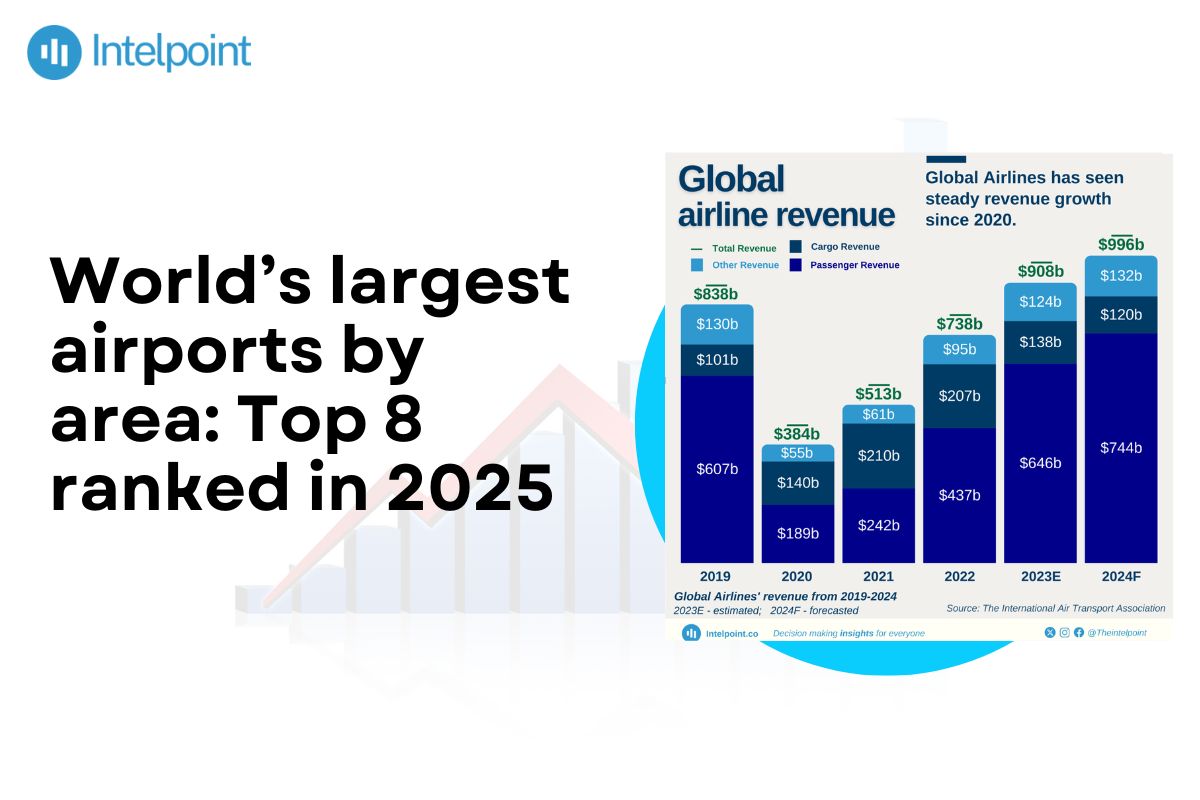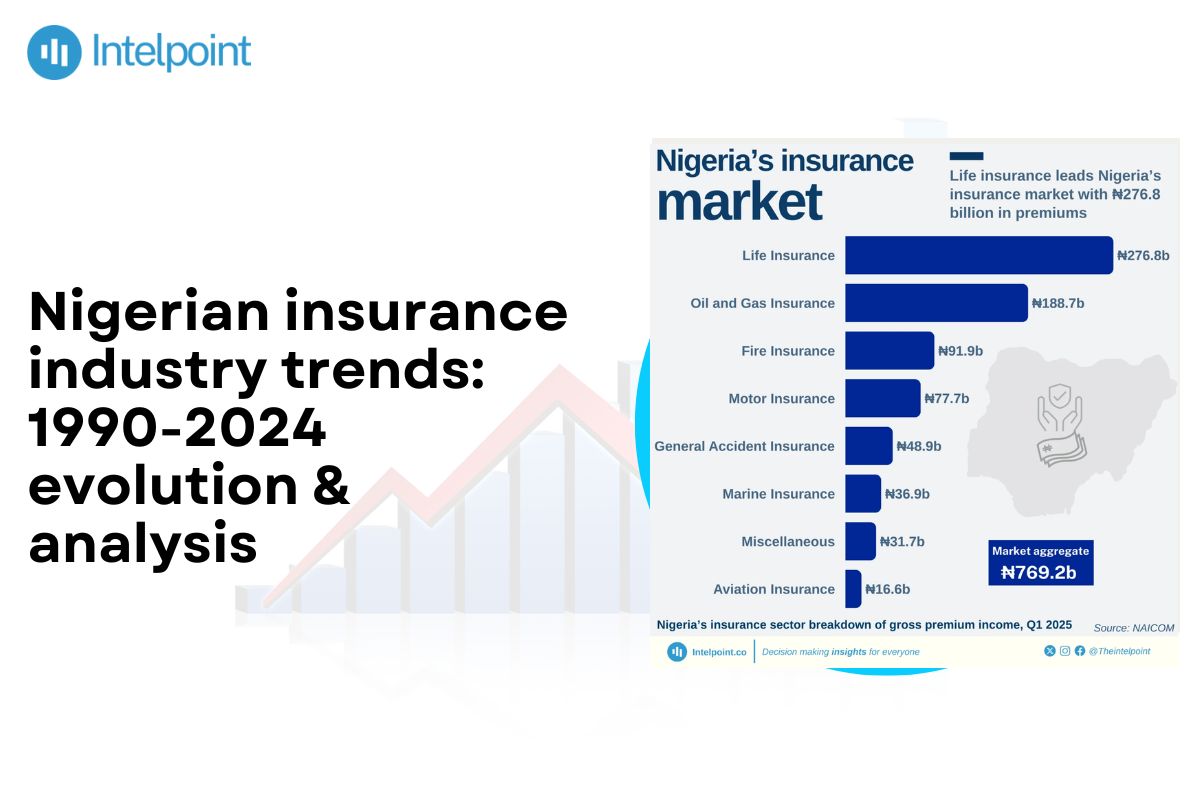They say education is the key to success, but some nations are proving they’ve mastered the lock.
The most recent World Education Rankings reveal a shifting global classroom, with countries like Finland, Singapore, and South Korea once again setting the pace.
These rankings matter, as they influence policy, investment, and opportunity.
Key takeaways
Here’s the 2025 world education rankings table, based on the Education Rankings by Country 2025 from World Population Review. It presents the top 10 countries ranked by overall education performance:
| Rank | Country |
| 1 | China |
| 2 | South Korea |
| 3 | Finland |
| 4 | Hong Kong |
| 5 | Singapore |
| 6 | Canada |
| 7 | New Zealand |
| 8 | Japan |
| 9 | Australia |
| 10 | Netherlands |
How education is ranked globally
There is no single governing body or organization that produces the definitive global education ranking.
Rankings vary because different organizations use different indicators and methodologies to assess education systems.
Some rankings focus on the overall quality of the system, while others concentrate on specific levels of education or other metrics, such as literacy rates or educated adult populations.
For example, each year, the Best Countries Report (a collaboration between US News & World Report, BAV Group, and the Wharton School at the University of Pennsylvania) dedicates a section to global education.
Drawing on survey responses from thousands across 78 nations, it ranks countries according to public perception. The education index is based on three equally weighted measures:
- Strengths of the public school system
- Desirability for higher studies
- Overall quality of education.
World education rankings forecast
Projections suggest that by 2030, just 30 of the world’s 197 countries will have an adequate supply of secondary school teachers.

This is according to the United Nations Educational, Scientific and Cultural Organization (UNESCO) and the Teacher Task Force.
The trend signals a looming global crisis, as most nations face challenges in staffing classrooms with qualified educators.
Sub-Saharan Africa is projected to be the most severely affected region, with shortages in 40 countries, followed by Europe and North America (33 countries) and Latin America and the Caribbean (29 countries).
On the other hand, a handful of countries in these same regions are expected to meet demand (11 in Europe and North America, eight in Latin America and the Caribbean, and four in Sub-Saharan Africa).
Still, these figures remain far too small to offset the global shortfall.
Insights on various World education rankings lists
Various reputable sources provide different rankings for education systems, with some focusing on the overall quality of the education system and others on specific aspects, such as the most educated populations.
1. Singapore leads on PISA scores
The Programme for International Student Assessment (PISA), organized by the OECD every three years, evaluates 15-year-olds in reading, math, and science to assess K–12 performance on a global scale.
The Insights on Various World Education Rankings List show Singapore leading the pack with a score of 575, followed by Japan (547), South Korea (546), and Finland (525). These countries combine challenging curricula with strong teacher development and a cultural focus on learning.
The US (505) and UK (500) are above the OECD average but still lag behind the top performers from Asia and the Nordic region.
Countries that score high in education tend to have a few important things in common:
- They offer comprehensive curricula that encourage problem-solving and apply learning to real-life situations.
- Their teachers are not only well-trained but also highly respected in their fields.
- They ensure that all students, regardless of their background, have equal opportunities to succeed.
While PISA serves as a useful benchmark, it’s essential to consider these results in conjunction with other factors, such as creativity, emotional well-being, and civic readiness, to gain a more comprehensive understanding of educational success.
2. Norway tops education index (schooling years & enrollment)
The Education Index, featured in the United Nations Development Programme (UNDP)’s Human Development Report, evaluates educational achievement on a scale from 0 to 1.
It combines mean years of schooling (the average number of years completed by adults) with expected years of education (the projected years for children starting school).
According to UNDP's latest data, Norway (0.970), Germany (0.942), and Denmark (0.962) are among the top performers worldwide, showcasing robust K–12 systems and broad access to higher education.
3. Ukraine leads on adult literacy rate
When it comes to literacy rates, the leading countries also shine. Latest statistics highlight Ukraine, Georgia, and Norway at 100% adult literacy.
Poland at 99.8%, with countries such as the United States, the United Kingdom, Germany, and Japan all equal at 99%.
These numbers reflect not just access to education but also the effectiveness of teaching and student retention.
4. Nordic nations are bullish on school enrollment
Examining school enrollment, World Bank data show that many Nordic nations, such as Denmark, Iceland, and Finland, maintain near-perfect universal secondary enrollment, often exceeding 99%.
This steady engagement from early education through to higher education emphasizes the cultural and governmental commitment to viewing education as a vital tool for nation-building.
5. MIT remains king on university rankings
When it comes to global university rankings, we often turn to sources such as the QS World University Rankings and the Times Higher Education (THE).
These rankings evaluate higher education institutions based on various criteria, including teaching quality, research output, academic reputation, and citations per faculty member.
In the 2025 QS rankings, the Massachusetts Institute of Technology (MIT) retained its number one position, followed by the University of Oxford and Imperial College London in third place.
The Times Higher Education 2025 list ranks Oxford as the highest, followed by Harvard University in third place and the University of Cambridge in fifth, highlighting the consistent presence of US and UK institutions among the global elite.
Why these countries lead: Key success factors
Education systems that excel do so because they combine consistent funding, high teaching standards, inclusive policies, and a genuine commitment to innovation. Here are some key factors that drive their success:
- Significant Investment: According to World Bank data, countries such as Finland, Norway, and Denmark allocate around 5–7% of their GDP to education. This ensures they have solid infrastructure, smaller class sizes, and plenty of support for students.
- High Teacher Quality: In Finland, every teacher is required to hold a master’s degree in education, which elevates teaching to a respected, research-driven profession.
- Equity in Access: Singapore has a merit-based system that not only rewards hard work but also offers targeted help to students who are struggling, effectively narrowing achievement gaps without compromising standards.
- Innovation in Higher Education: The United States stands out in global university rankings due to substantial investments in research and development, as well as strong partnerships between industry and academia, which keep institutions like MIT and Stanford at the forefront of innovation.
There’s more than meets the eye…
Global education rankings can provide some interesting insights, but they come with significant caveats that can skew our understanding of a country's actual educational performance:
For example, PISA assessments often lean towards systems that align with Western or East Asian methods, leaving out countries that have different teaching styles or learning priorities.
Meanwhile, issues such as poverty, access to education in rural areas, and income inequality, pointed out by UNESCO, are seldom considered in these scoring systems.
The bottom line
For policymakers, educators, and communities, these rankings should be more than just a badge of honor; they should serve as a reminder to act.
Education may feel like a global competition, but the real victory lies in making sure every learner has the tools they need to succeed.




